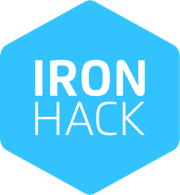In this lab, you will work with the sample_superstore dataset to practice creating, inspecting, and manipulating dataframes. Follow the steps below to complete the tasks.
-
Load the
sample_superstoredataset into a dataframe. You can find this dataset in thedatasetspackage or download it as a CSV file from online sources. -
Save the dataframe as
superstore.Hint: Use the
read.csv()orread_excel()function to import the dataset.
- Display the first 10 rows of the dataframe using the
head()function. - Use the
str()function to inspect the structure of the dataframe. What are the data types of the columns? - Use the
summary()function to get a summary of the dataframe. What insights can you gather from the summary?
- Extract the
Salescolumn as a vector using the$operator. - Subset the first 15 rows and the columns
Order ID,Customer Name, andSales. - Use the
nrow()andncol()functions to determine the number of rows and columns in the dataframe.
- Filter the dataframe to show only rows where the
Profitis greater than 100. - Filter the dataframe to show only rows where the
Categoryis"Furniture"and theSalesare greater than 500. - Filter the dataframe to show only rows where the
Regionis"West"and theQuantityis greater than 5.
- Add a new column called
Profit Marginthat calculates the profit margin as(Profit / Sales) * 100. - Modify the
Salescolumn by rounding the values to 2 decimal places. - Remove the
Postal Codecolumn from the dataframe using thesubset()orselect()function.
- Check for missing values in the dataframe using the
is.na()function. Are there any missing values? - If there are missing values, remove rows with missing data using the
na.omit()function. - Replace any missing values in the
Salescolumn with the mean of theSalescolumn using thena.fill()function.
- Group the dataframe by
Regionand calculate the totalSalesandProfitfor each region. - Create a new column called
Discount Levelthat categorizes theDiscountcolumn into:"Low"(0-0.2)"Medium"(0.2-0.5)"High"(0.5-1)
- Sort the dataframe by
Salesin descending order.
- Submitted notebook (or file) with your responses to each of the exercises.
- Upon completion, add your deliverables to git.
- Then commit git and push your branch to the remote.
- Make a pull request and paste the PR link in the submission field in the Student Portal.
Good luck!
